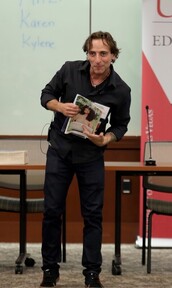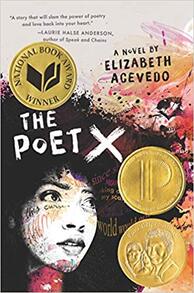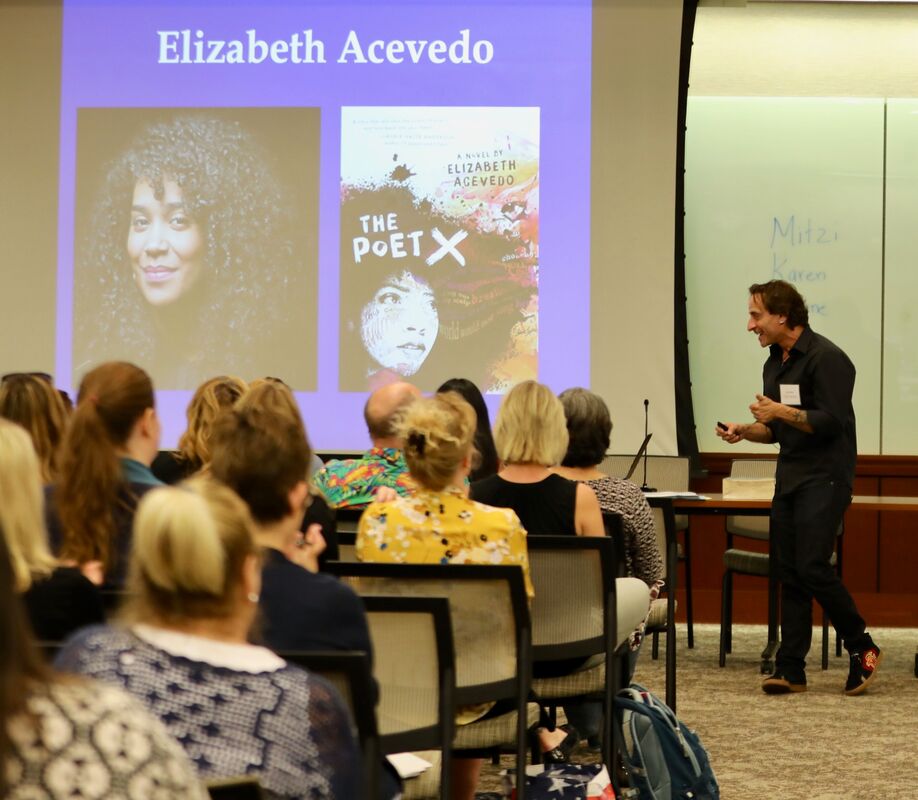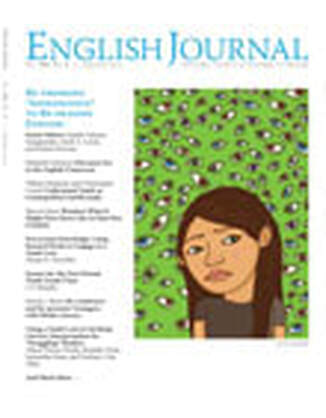A Seat at the Table: Adolescents Contributing to their Literature
talking about, ‘Oh my god, you get cramps? Well, have you have been kicked in the
nuts?’ Like, I don’t care that you were kicked in the nuts. You don’t get kicked in the
nuts for hours a day for like five days a week and every single month.”
The high school winner, though different in narrative approach, was no less impressive. In “Murderous Mary & the RISE of Erwin,” a student team from Elizabethton High School reclaim and reframe a 100-year-old notorious piece of local lore, the public hanging (via crane) of a circus elephant named Mary after she trampled an abusive handler. The student podcasters draw upon interviews with local politicians, archivists, community members, and citizens to first tell how public pressure, somewhat reminiscent of George Orwell’s “Shooting an Elephant,” led to the grisly event, as well as how the execution saddled the town of Erwin with a nasty reputation for decades. However, the student podcasters flip the script by featuring the conservation work of The Elephant Sanctuary in Tennessee, an organization that developed in the historical shadow of Mary’s execution to provide a safe haven for captive elephants to receive care, live out their lives with the companionship of a herd, and raise public awareness about issues related to elephants both in captivity and in the wild.
| NPR reported receiving 6,000 podcast entries featuring 25,000 student participants and will feature standout entries, in addition to the winners, on the radio over the coming weeks. This news establishes NPR’s contest as another great outlet for the authentic tasks and audiences that dynamic teachers seek for their students, but I think the products demonstrate more than that. Both student podcasts showcase effective use of the genre conventions and the hallmarks of good podcasting and quality student journalism, but it’s interesting to consider the audiences for each as well. These two podcast winners aren’t just youth voices speaking to youth audiences, but rather they are youth podcasters speaking to multigenerational and broad-spanning audiences and often framing adult voices to do so, rather than the more typical pattern in YAL of adult writers and podcasters featuring/framing youth. Saragianides, Petrone, and Lewis (2017) remind us that “reexaming assumptions about adolescence” may impact our teaching and thinking (p. 2), and they also provide us a useful tool in the “Youth Lens” (Petrone, Saragianides, & Lewis, 2015) for critically analyzing how youth are portrayed in literature; however, the NPR student podcast winners are just the latest example demonstrating youth as not just complex literary subject but also as complex literary creator, capable of effectively engaging with audiences beyond just their peers and teachers. Participatory frameworks can lead to youth empowerment (Jennings et al., 2005), but, as teachers, we shouldn’t just be looking for authentic tasks and audiences for our students to participate in, but we should be willing to feature the youth-generated products that emerge from those opportunities in our curriculum. Quality youth-generated literature is worthy of being included alongside the mostly adult authors of our curricula, not just as models for what our own students can produce, but also for critique of literary merit on its own. |
In the next section, Jocelyn highlights the literary value of two recent youth memoirs to demonstrate the curricular value of youth-generated text and media.
Zooming in on Two Recent Youth Memoirs
In Kamal’s Under the Shade of the Apple Tree we see, through a youth’s eyes, the ways xenophobia and Islamophobia impact Muslim immigrant families in America. Kamal’s writing demonstrates beautiful symbolism through her father’s apple tree. She explains how he carefully planted and tended to the tree until it bore fruit. When a friend comes to visit, Myra’s family give her some apples to take home, but things take a turn for the worse when her friend’s family finds out her family is Muslim. Myra slows down the moment in which her neighbors come to pick their daughter up and hear Adhan, the call to prayer. She writes:
“Yes, we are,” replied my mother with her head held high. (pp. 180-181)
Giudici-Juarez also powerfully conveys her feelings as a Latin American immigrant trying to apply for college. Her essay begins at the start of her educational journey, and she uses short vignettes to take us through keystones of her journey. She describes first struggling with English in her American school and her own parents’ embarrassment in being unable to assist her with her homework. Her journey continues as she excels at both English and school in general. She provides a window into the home life of a bilingual immigrant youth. She described, “I am eight years old…My mother needs me to help my brother in school. I talk to his teachers and translate his reading questions for my parents. I show up to every open house with them, sit in on important conversations, and translate our mail. I know more about taxes than I need to,” (p. 174). Her perspective redefines childhood experience, and highlights the way, as a child, she is participating in very adult things.
Interestingly, both Guidici-Juarez and Kamal’s essay end in the unknown. There is no sure resolution. While Kamal’s father says he will refuse to tear down the apple tree, the reader does not know how this impacted the family’s life in their community. Similarly, Guidici-Juarez story is unfinished, as readers are left wondering whether she will be able to go to college or not. Other youths will likely identify with these feelings of uncertainty and appreciate reading about other young people who are struggling with their identities in the community or fulfilling their personal goals in the near future.
Resources for Incorporating Youth-Generated Writing and Media into Curriculum
- NPR Student Podcast Challenge: Includes links to 2018 winning podcasts, podcasting resources for students and teachers, and information about the contest.
- The Scholastic Art and Writing Awards: Includes links to volumes of the Best Teen Writing, The National Catalog of the Scholastic Art & Writing Awards, and online galleries of award-winning student writing and artwork.
- TED Youth: Includes videos, photos, and information from TED Youth events.
- The Moth Education: Includes videos of classroom-friendly stories from The Moth including winners and standouts from The Moth’s High School GrandSLAMs.
- 826 Valencia: San Francisco-based nonprofit (which has branched out to several other cities) dedicated to supporting under-resourced students in their writing. Along with the specific examples of youth writing on this website, a group of adolescents from 826 Valencia curate annual volumes of The Best American Nonrequired Reading.
References
Giudici-Juarez, S. (2018). Truths I’m trying to ignore. In Benzizoune, R. (Ed.) The best teen writing of 2018. New York, NY: Scholastic Art & Writing Awards.
Jennings, L. B., Parra-Medina, D.M., Messina, D.K.S., McLoughlin, K. (2006). Toward a critical social theory of youth empowerment. Journal of community practice, 14(1): 31-55.
Kamal, M. (2018). Under the shade of the apple tree. In Benzizoune, R. (Ed.) The best teen writing of 2018. New York, NY: Scholastic Art & Writing Awards.
Petrone, R., Sarigianides, S.T., & Lewis, M.A. (2015). The youth lens: Analyzing adolescence/ts in literary texts. Journal of Literacy Research, 46(4): 506–533.
Saragianides, S. T., Petrone, R., & Lewis, M.A. (2017). Rethinking the “adolescent” in adolescent literacy. Urbana, Il: NCTE.
Jocelyn Amevuvor is a PhD Candidate in Curriculum and Instruction with an Emphasis on Literacies and English Language Arts at Penn State University.









 RSS Feed
RSS Feed